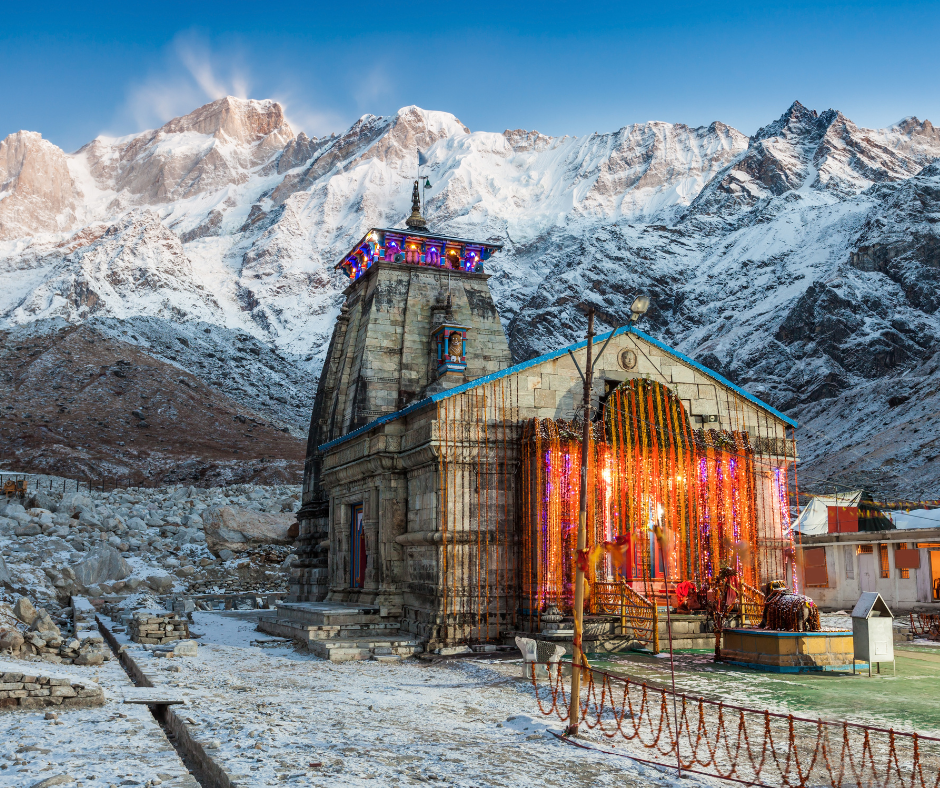
22-05-2019
admin
The Sacred History of Shri Kedarnath and Why You Must Visit It Once in a Lifetime
The Sacred History of Shri Kedarnath and Why You Must Visit It Once in a Lifetime
Nestled amidst the majestic Himalayas, Shri Kedarnath Temple is one of the holiest shrines in India and an essential part of the Char Dham Yatra. Dedicated to Lord Shiva, this ancient temple stands as a symbol of faith, spirituality, and endurance. Visiting Kedarnath is more than just a pilgrimage; it is a transformative journey that connects one to divinity and nature in its purest form. Let’s explore the sacred history of Shri Kedarnath and why every devotee should undertake this spiritual journey at least once in a lifetime.
The Legendary History of Shri Kedarnath
Shri Kedarnath has an extraordinary history that is deeply rooted in Hindu mythology. According to ancient texts, the temple was originally built by the Pandavas from the Mahabharata. After the great Kurukshetra war, the Pandavas sought penance for their sins and embarked on a journey to seek Lord Shiva’s blessings. However, Lord Shiva, displeased with the bloodshed of the war, eluded them by transforming into a bull and hiding in Kedarnath. When the Pandavas finally found Him, He dived into the ground, leaving behind His hump on the surface. This sacred site was later enshrined as the Kedarnath Temple.
Adi Shankaracharya, the great Hindu philosopher and saint, is believed to have revived the temple in the 8th century AD. He played a significant role in restoring and establishing the Kedarnath Temple as a major pilgrimage center. His samadhi (final resting place) is also located near the temple, marking his deep connection with this holy site.
Architectural Marvel Amidst Nature’s Glory
The Kedarnath Temple stands at an altitude of 3,583 meters (11,755 feet) above sea level, surrounded by the breathtaking snow-capped peaks of the Garhwal Himalayas. Built with massive stone slabs, the temple has withstood harsh weather conditions for centuries. Its simplistic yet robust architecture is a testament to the ingenuity of ancient Indian craftsmanship. The sanctum houses the revered Shiva Lingam, which is worshipped as one of the twelve Jyotirlingas.
Despite facing the devastating floods of 2013, the temple miraculously remained intact while the surrounding areas suffered extensive damage. This divine protection further solidified devotees’ belief in the power of Lord Shiva and the sanctity of Kedarnath.
Spiritual Significance: The Path to Moksha
Kedarnath is considered the abode of Lord Shiva, the destroyer and transformer in the Hindu trinity. The temple is one of the five sacred Panch Kedar temples and holds immense religious significance. It is believed that a visit to Kedarnath washes away sins and leads one toward salvation (moksha). The serene environment, coupled with the powerful vibrations of the temple, makes it an ideal place for meditation and self-reflection.
The temple opens only for six months a year, from April-May to October-November, due to extreme weather conditions. During the winter, the deity is shifted to Ukhimath, where devotees continue to offer prayers. The seasonal opening of the temple adds to the anticipation and devotion of pilgrims.
The Journey to Kedarnath: A Test of Devotion and Endurance
Reaching Kedarnath is an adventure in itself. The journey involves a trek of approximately 16 kilometers from Gaurikund, where devotees traverse rugged terrains, dense forests, and scenic landscapes. The pilgrimage tests one’s physical endurance and spiritual dedication. For those unable to trek, alternative options such as ponies, palanquins, and helicopter services are available.
The challenging trek becomes a metaphor for the journey of life, teaching pilgrims patience, resilience, and faith. Every step taken towards Kedarnath is filled with chants of “Har Har Mahadev,” resonating through the mountains and filling hearts with divine energy.
Why You Must Visit Shri Kedarnath at Least Once in a Lifetime
Spiritual Awakening – The temple’s divine aura, combined with the purity of the Himalayas, offers an unparalleled spiritual experience. The energy in Kedarnath is so powerful that it leaves a lasting impact on the soul.
A Connection with Nature – The journey to Kedarnath takes you through some of the most breathtaking landscapes on Earth. The sight of the Mandakini River, lush green valleys, and towering peaks is enough to leave anyone in awe of nature’s grandeur.
A Journey of Faith and Strength – Undertaking the pilgrimage is a test of one’s willpower and devotion. It requires physical strength, mental resilience, and unwavering faith in Lord Shiva.
An Escape from the Material World – In a fast-paced world filled with stress and distractions, Kedarnath provides an opportunity to disconnect and find inner peace. The simplicity of the place, free from materialistic chaos, allows pilgrims to focus on their spiritual growth.
Witnessing Divine Miracles – Many pilgrims have shared stories of divine experiences and miracles at Kedarnath. The temple’s survival during the 2013 floods is considered one such miracle, reinforcing the belief in Lord Shiva’s divine presence.
A Cultural and Historical Treasure – The temple is not just a religious site but a cultural and historical treasure. It stands as a testimony to India’s rich heritage and the deep-rooted traditions of Hinduism.
Conclusion
Shri Kedarnath is more than just a temple; it is a divine sanctuary that offers solace, strength, and salvation. It is a place where mythology meets reality, where devotion conquers hardships, and where nature and spirituality exist in perfect harmony. Whether you seek blessings, self-discovery, or an escape into nature’s lap, a visit to Kedarnath is a once-in-a-lifetime experience that stays with you forever. The journey may be challenging, but the rewards are immeasurable. If there is one pilgrimage that every Hindu should embark upon, it is Kedarnath – the sacred abode of Lord Shiva.


